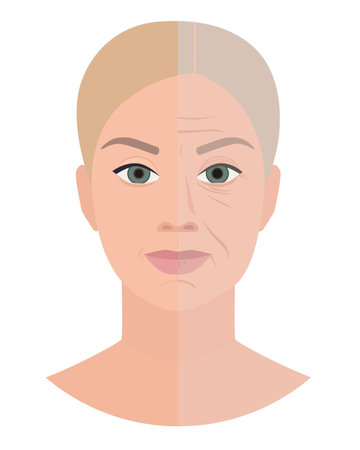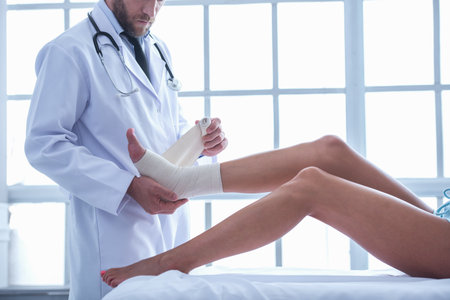Understanding Skin Tightening Procedures
Skin tightening procedures are increasingly popular in the United States for those seeking a more youthful appearance without invasive surgery. These treatments are designed to address mild to moderate skin laxity, smoothing out fine lines and improving overall skin tone. There are several types of skin tightening options commonly offered across the country, including non-surgical methods such as radiofrequency (RF), ultrasound, and laser-based technologies. Each method works by stimulating collagen production in the deeper layers of the skin, leading to gradual firming and lifting effects over time. Surgical procedures like facelifts or neck lifts are also available for individuals with significant sagging, but many people prefer non-invasive or minimally invasive approaches due to shorter recovery times and reduced risk. Candidates who benefit most from these treatments typically include adults experiencing early signs of aging, such as loose skin on the face, neck, or body. It’s also a great option for those who have lost some skin elasticity after weight loss or pregnancy. Overall, understanding what these procedures involve helps set realistic expectations before moving forward with treatment.
2. How to Prepare for Your Treatment
Proper preparation is key to getting the best results from your skin tightening procedure. Here’s a step-by-step guide to help you get ready, feel confident, and ensure a smooth experience from start to finish.
Consultation: Your First Step
Before scheduling your treatment, book a consultation with a board-certified dermatologist or licensed provider. This meeting gives you an opportunity to:
- Discuss your skin concerns and goals
- Review your medical history, allergies, and current medications
- Ask questions about different technologies and what suits you best (e.g., radiofrequency, ultrasound, laser)
- Understand potential risks, side effects, and downtime
Questions to Ask During Consultation
| Question | Why It Matters |
|---|---|
| What type of skin tightening do you recommend for my skin type? | Ensures the chosen method is safe and effective for your needs. |
| How many sessions will I need? | Helps plan your schedule and budget accordingly. |
| What should I expect during recovery? | Prepares you for any downtime or aftercare steps. |
| Are there any risks or side effects? | Keeps you informed and aware of potential outcomes. |
Pre-Treatment Dos & Don’ts
Your provider will give you specific instructions based on the procedure, but here are some general guidelines:
| Do | Don’t |
|---|---|
| Avoid sun exposure and tanning beds for at least 2 weeks before treatment | Don’t use retinoids or harsh exfoliants unless approved by your provider |
| Inform your provider about recent cosmetic treatments (like fillers or Botox) | Don’t schedule if you have active skin infections or open wounds in the area |
| Arrive with clean, makeup-free skin on the day of the procedure | Don’t take blood-thinning medications (like aspirin) without consulting your doctor |
Setting Realistic Expectations
No matter how advanced the technology is, it’s important to remember that results vary from person to person. Most non-surgical skin tightening treatments offer gradual improvement over several weeks or months. While many patients see tighter, smoother skin, dramatic changes often require multiple sessions or may be better achieved with surgical options. Open communication with your provider helps set achievable goals and ensures you feel good about your investment in self-care.

3. What Happens During the Procedure
When you arrive for your skin tightening appointment, the experience is designed to be smooth and comfortable from start to finish. Here’s what you can expect as you move through each step of the process:
Check-In and Preparation
Upon arrival at the clinic or medspa, youll check in with the front desk staff who will confirm your appointment and answer any last-minute questions. You’ll be asked to fill out any necessary forms if you haven’t already done so online. Next, a provider or nurse will escort you to the treatment room, where you’ll have a chance to discuss your goals and review your medical history one more time. The area to be treated will be cleansed thoroughly to remove makeup, lotions, or oils.
The Skin Tightening Treatment Process
The actual procedure varies depending on the technology used—such as radiofrequency, ultrasound, or laser—but generally follows a similar pattern. Your provider may apply a topical numbing cream if needed, especially for more sensitive areas or deeper treatments. As the device is moved across your skin, you might feel sensations like warmth, tingling, or mild pressure. These are typically very tolerable, but let your provider know if anything feels uncomfortable; they can adjust settings or offer breaks as needed. Most sessions last between 30 minutes and an hour, depending on the size of the area being treated.
Sensations and Communication
It’s completely normal to feel a gentle heating or “snapping” sensation during some types of skin tightening procedures. Your provider will check in with you throughout the session to ensure you’re comfortable and address any concerns right away. Don’t hesitate to speak up—your feedback helps them tailor the experience for your comfort and safety.
Aftercare Instructions
Once the procedure is complete, your provider will apply soothing products such as aloe vera gel or a cooling mask to calm the skin. They’ll review aftercare instructions with you before you leave, ensuring you know how to care for your skin over the next few days for optimal results.
Immediate Aftercare and Recovery
Right after your skin tightening procedure, it’s completely normal to experience some mild side effects. These are usually temporary and part of the body’s natural response as it begins to heal and rejuvenate. Here’s what you can expect in those first few hours and days:
Typical Side Effects
| Side Effect | What It Feels Like | How Long It Lasts |
|---|---|---|
| Redness | Your skin may look a bit flushed, similar to a light sunburn. | A few hours up to 24 hours |
| Swelling | Mild puffiness is common, especially in sensitive areas. | 24–48 hours, typically mild |
| Sensitivity | The treated area might feel warm or tender when touched. | A few hours to a day or two |
| Tingling or Tightness | You may notice a slight tingling sensation or skin tightness. | A few days, usually fades gradually |
Comfort Measures for Home Care
- Cool Compresses: Applying a cool (not cold) compress can help soothe redness or swelling.
- Mild Cleansers: Stick to gentle cleansers and avoid scrubbing the treated area for at least 24 hours.
- No Harsh Products: Avoid exfoliants, retinoids, and acids until your provider gives you the green light.
- Moisturize: Use a fragrance-free moisturizer to keep your skin hydrated and comfortable.
- Sunscreen: Daily SPF is essential to protect your results and prevent irritation from UV rays.
When You Can Resume Daily Activities
The great news about most non-invasive skin tightening procedures is that downtime is minimal. Many people return to work, run errands, or hit the gym the very next day—sometimes even the same day! Here’s a general guide:
| Activity | Recommended Waiting Period |
|---|---|
| Work/School (non-strenuous) | Immediately or within 24 hours |
| Makeup Application | After 24 hours or as soon as redness subsides |
| Exercise/Sweating Activities | Wait 24–48 hours to minimize irritation risk |
| Sun Exposure/Tanning Beds | Avoid for at least one week, use SPF daily thereafter |
| Swimming/Saunas/Hot Tubs | Avoid for at least 48 hours post-procedure |
If you have any unusual symptoms—such as severe pain, blistering, or signs of infection—reach out to your provider right away. Otherwise, with proper aftercare, you’ll be back to your usual routine quickly and ready to enjoy smoother, firmer skin!
5. Long-Term Results and Follow-Up
If you’re considering or have recently undergone a skin tightening procedure, it’s natural to wonder about the long-term results and what kind of follow-up care you might need. Here’s what you can expect in the months following your treatment.
When Will You See Visible Results?
The timeline for seeing visible results after a skin tightening procedure varies depending on the specific technology used, your skin type, and your body’s natural healing response. Some people notice an immediate improvement in skin firmness right after their session due to initial swelling and tissue contraction. However, the most significant and lasting results typically develop gradually over several weeks to a few months as your body produces new collagen and elastin. Patience is key—most patients see optimal improvements within three to six months.
How Long Do Results Typically Last?
Skin tightening treatments are designed to offer long-lasting benefits, but they aren’t permanent since your skin will continue to age naturally over time. In general, results from non-surgical procedures like radiofrequency or ultrasound-based treatments can last anywhere from one to three years. Factors such as your age, lifestyle habits (like sun exposure and smoking), and how well you maintain your overall skin health can influence the longevity of your outcome. Many individuals choose to schedule maintenance sessions once or twice a year to prolong their results.
When Should You Schedule Follow-Up Appointments?
Your provider will guide you on when to return for follow-up visits based on your unique needs and the type of procedure performed. Most clinics recommend a follow-up appointment within a few weeks after your initial treatment to assess progress, answer any questions, and ensure you’re healing well. After that, annual or semi-annual check-ins may be suggested if you want to maintain or enhance your results. Always reach out sooner if you experience any unexpected changes or concerns.
Pro Tips for Maximizing Your Results
- Follow all post-procedure instructions provided by your specialist.
- Maintain a consistent skincare routine with gentle cleansers and moisturizers.
- Protect your skin from sun exposure by using sunscreen daily.
- Avoid smoking and manage stress, as both can accelerate skin aging.
In Summary
Understanding the timeline for visible improvements, the expected duration of results, and the importance of regular follow-ups will help you get the most out of your skin tightening experience. Open communication with your provider ensures that any questions or concerns are addressed promptly, supporting both great outcomes and peace of mind.
6. Frequently Asked Questions
Is skin tightening safe?
Yes, skin tightening procedures—whether they use radiofrequency, ultrasound, or laser technology—are generally considered safe when performed by a board-certified provider. Most devices used in the U.S. are FDA-cleared, and clinics follow strict protocols to minimize risk. Minor side effects like redness or swelling are common but usually resolve within a few days.
How soon will I see results?
Most clients notice some immediate improvement due to temporary collagen contraction, but optimal results develop gradually over several weeks to months as your body produces new collagen. Depending on the treatment type and your unique skin condition, you may need a series of sessions for best outcomes.
Will I need downtime after my procedure?
One of the biggest benefits of non-surgical skin tightening is minimal to no downtime. You can typically return to work or your regular activities right after your session. Some people experience mild redness or sensitivity, similar to a light sunburn, which resolves quickly.
How long do the results last?
The longevity of your results depends on factors like your age, skin health, lifestyle habits, and the specific technology used. Most clients enjoy firmer skin for 1-2 years before considering maintenance treatments. Protecting your skin from sun exposure and following a healthy skincare routine can help prolong your results.
Are there any lifestyle restrictions after treatment?
Generally, you can resume most daily activities immediately after treatment. However, it’s wise to avoid intense exercise, hot tubs, or direct sun exposure for at least 24-48 hours post-procedure to minimize irritation. Your provider will give you personalized aftercare instructions based on your individual needs.
Does skin tightening hurt?
Treatments are designed with comfort in mind. You might feel warmth or tingling during the procedure, but most people describe it as tolerable rather than painful. If you have concerns about discomfort, talk with your provider—they can offer options like topical numbing cream if needed.


